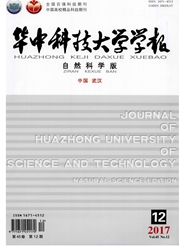

 中文摘要:
中文摘要:
采用电化学测试技术和仪器分析方法研究了2种阻锈剂在混凝土中的迁移,利用电化学测试方法评估阻锈剂在模拟体系中的缓蚀效果,结合阻锈剂的缓蚀作用,研究了阻锈剂改善再碱化修复碳化钢筋混凝土结构效果的可行性.结果表明:在3A/m^2恒电流密度形成的电场作用下阻锈剂通过30mm厚的混凝土速率明显高于未通电情况下的,说明电场作用对阻锈剂的迁移扩散过程起到了促进作用;在模拟体系中,随着乙醇胺及二乙醇胺浓度的增大,其缓蚀效果也逐步提高,相同浓度下二乙醇胺缓蚀效果更好,在二乙醇胺浓度为0.08mol/L时对Q235钢筋缓蚀率为93.24%;再碱化后在相同的弛豫时间内,采用添加二乙醇胺的碳酸钠电解液进行再碱化的样品腐蚀电位明显正移,腐蚀电流密度变小,阻锈剂能够改善再碱化的修复效果.
 英文摘要:
英文摘要:
Migration of corrosion inhibitors in concrete and the inhibition effect of the inhibitor in the simulated system were measured by using electrochemical test techniques and instrumental analysis methods.And the feasibility on the inhibition effect of the corrosion inhibitor improving realkalisation repair techniques was investigated.The results indicate that the rate that corrosion inhibitor of alcamines passed through 30 mm concrete under the electric field formed by the 3 A/m2 constant current density is significantly higher than the case of unpowered,which shows that the electric field promote the migration of the corrosion inhibitor.The corrosion inhibitor has an inhibition effect,but also could go through the concrete into the steel surface during realkalisation process.The corrosion inhibitor can improve the effect of realkalisation repair.With the concentration increasing of ethanolamine and diethanolamine,their inhibition effects were also gradually improved.At the same concentration,diethanolamine manifeste excellent anticorrosive effect.And the anticorrosion rate of 0.08 mol/L diethanolamine for Q235 steel rebar is up to 93.24 %.The open circuit potential is more positive and corrosion current density become smaller which sample is realkalisated by Na2CO3 electrolyte solution where the diethanolamine is added.Realkalisation auxiliary corrosion inhibitor of alcamines corrosion inhibitor can enhance rehabilitation effects.
 同期刊论文项目
同期刊论文项目
 同项目期刊论文
同项目期刊论文
 期刊信息
期刊信息
